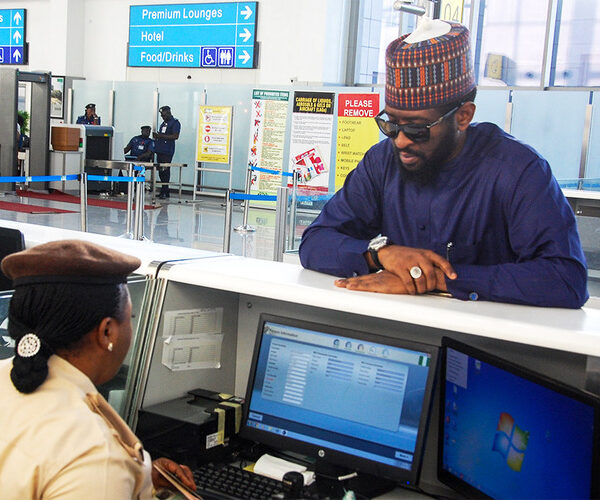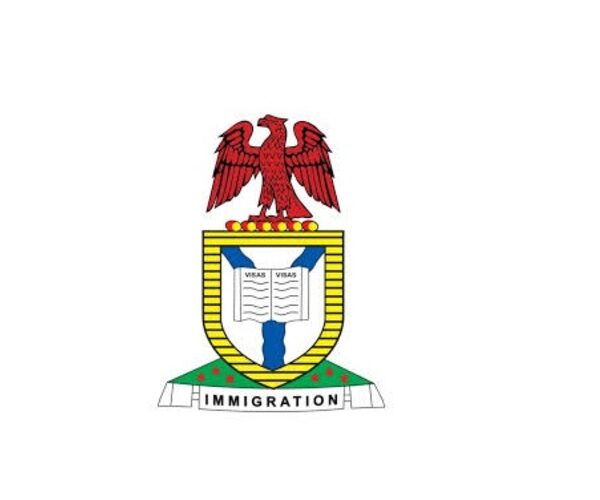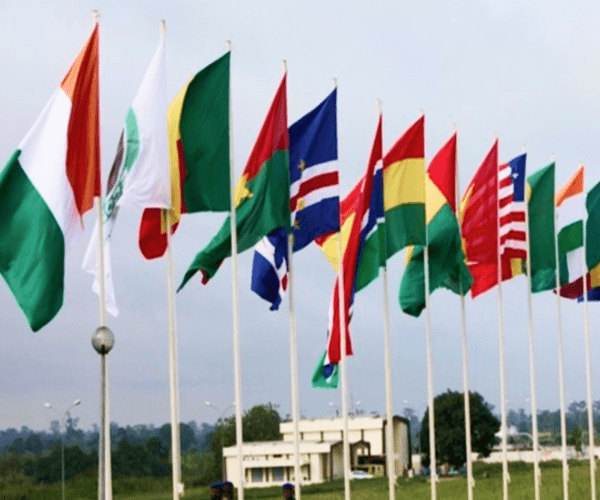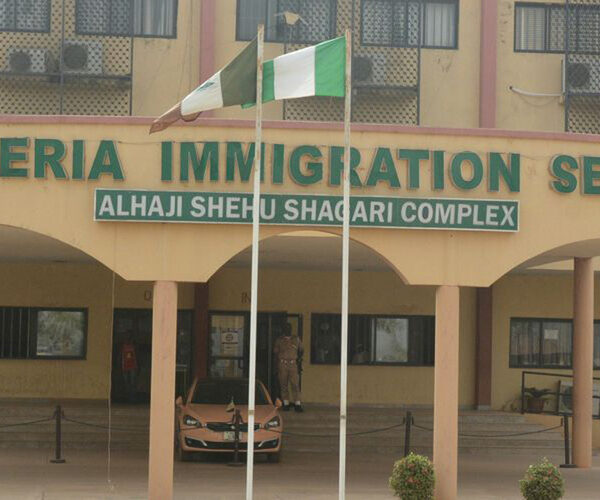- Government Organisation
- Airport Rd, AMAC, Federal Capital Territory, Nigeria
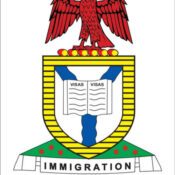
Nigeria Immigration Service Headquarters Abuja
The Nigeria Immigration Service (NIS) is the government agency that has been charged with the responsibility of migration management in Nigeria.
Over the years, the NIS has witnessed a series of changes since it was extracted from the Nigeria Police Force (NPF) in 1958.
The Immigration Department, as it was known then, was entrusted with the core immigration duties under the headship of the Chief Federal Immigration Officer (CFIO) and the first to sit on that chair was in the person of Mr. EH Harrison.
The department, in its emergent stages, inherited the Immigration Ordinance of 1958 for its operation. At inception, the department had a narrow operational scope and maintained a low profile and simple approach to attaining the desired goals and objectives of the government.
During this period, only the Visa and Business Sections were set up.
However, on August 1st, 1963, the Immigration Department came of age when it was formally established by an Act of Parliament, Cap I71, Laws of the Federation Nigeria.
The head of the department became known as the Director of Immigration. Thus, the first set of Immigration officers were former NPF Officers. It became a department under the control and supervision of the Federal Ministry of Internal Affairs (FMIA) as a Civil Service outfit.
Following some structural reforms and a Government white paper on October 1st, 1992, the designation of “Director of Immigration” was changed to “Comptroller General of Immigration Service”, thereby granting the Service a para-military status.
Thus the last Director of Immigration became the first Comptroller General of Immigration (CGI) in the person of CGI Garba Abbas.
Subsequently, the Service has come a long way in its march towards reformation and restructuring to be better positioned for the implementation of modern migration management. This period saw changes in the organizational and operational structure of the Service, which were inevitable towards accommodating the added responsibilities as well as emerging regional and sub-regional political alignments. These included the introduction of the ECOWAS and African Affairs division, Aliens Control and Border Patrol Management and such other added responsibilities for the Service.
Furthermore, in 1988, the Service was saddled with the responsibility for the issuance of all Nigerian travel documents which included the Nigeria Passports.
The Service embraced the use of ICT in its operations with the introduction of the Machine Readable Passport (MRP) in June 1998 and the Combined Expatriate Residence Permit and Aliens Card (CERPAC) in 2001. Since then, it has continued to take giant strides in the use of ICT in its processes and operational procedures, notably the introduction of online payment for its facilities, which opened the way for the e-revenue collections in Nigeria, thereby becoming the pioneer government agency to embrace e-payments.
In an attempt to improve on the MRP and in line with International Civil Aviation Organization (ICAO) standards, the NIS introduced the e-Passport on May 17th, 2007 under the leadership of the then CGI CJ Udeh OFR, thereby putting the Federal Republic of Nigeria on the pages of history as the first country in Africa to introduce the e-passport and among the first countries in the world to do so. The use of the e-passport has become a major tool in the fight against trans-border criminality as it contains the biometric details of holders thus making multiple acquisition and identity theft difficult.
In due recognition of Nigeria Immigration Service’s stride as exemplified above, ICAO, the Service’s stride as exemplified above, ICAO, the global body that regulates standards for travel documents admitted Nigeria into its Board as the sole African representative in 2009.
As a result of this development, the e-passport machines have been installed in all the states of the federation and some Nigeria Missions abroad while, the NIS has been sending its personnel for passport intervention to all regions of the world in line with the Federal Government’s foreign policy of citizen diplomacy. This implies taking the mobile passport issuing equipment to acquire and process passports for Nigerians in the Diaspora.
Another significant achievement in the realm of ICT development is the establishment of a well-equipped forensic laboratory for the examination of travel and other documents. It is also to be noted that NIS personnel manning this laboratory are highly skilled, as they have been exposed to a lot of training locally and internationally on document fraud detection and techniques.
To further strengthen the legal framework for the NIS, the National Assembly passed the Immigration Act into law in May 25th, 2015. The Act thus repealed the hitherto obsolete 1963 Immigration Act and created an additional Directorate to be known as the Migration Directorate for the Service.
From the inception of the NIS in 1963 till date, the Service has had three (3) Chief Federal Immigration Officers (CFIO), three (3) Directors of Immigration, Two (2) Acting Comptrollers General and Eight (8) substantive Comptrollers General with the current Comptroller General in the person of CGI Muhammad Babandede MFR. He is taking giant steps and breaking ground with a view to upgrading and standardizing the operations of the Service while ensuring that prompt and efficient service delivery to its numerous publics is not compromised.
Vision
To be a modern, effective, and efficient Immigration Service, manned by well well-trained and motivated workforce.
Mission
To strengthen the security and prosperity of Nigeria through proactive, effective, and efficient border security and migration management.
OUR CORE MANDATE
The Nigeria Immigration Service is responsible, according to the act establishing it for:
- The control of persons entering or leaving Nigeria
- The issuance of travel documents, to bona fide Nigerians in and outside Nigeria
- The issuance of residence permits to foreigners in Nigeria
- Border surveillance and patrol
- Enforcement of laws and regulations with which we have been directly charged.
ORGANISATIONAL STRUCTURE OF THE NIGERIA IMMIGRATION SERVICE.
After due examination of the mandate, objectives, and functions of the Nigeria Immigration Service and taking into consideration the new Immigration Regulations 2017 as well as the expanding challenges confronting the Service in the face of rising cross-border immigration violations, the need for control of entry and monitoring of migrants, and transnational crimes, the Nigeria Immigration Service has been restructured into eight (8) Directorates and seven (7) Units as follows:
Directorates
- Human Resources Management;
- Finance and Accounts;
- Planning, Research and Statistics;
- Passport and Other Travel Documents;
- Investigation and Compliance;
- Border Management;
Migration
- Visa and Residency
- Units
- Procurement
- Legal;
- Internal Audits
- SERVICOM
- Internal Security
- Press and Public Relations
- Anti-Corruption and Transparency.
Human Resources Management Directorate
This Directorate is headed by a Deputy Comptroller General and divided into four (4) Divisions as follows:
- Appointment, Promotion and Discipline
- Staff Welfare and Gender
- Training and Staff Development
- General Services.
Finance and Accounts Directorate
The Directorate is headed by a Deputy Comptroller General and divided into three (3) Divisions as follows:
- Finance
- Budget
- Revenue.
Planning, Research, and Statistics Directorate
The Directorate is headed by a Deputy Comptroller General and divided into three (3) Divisions as follows:
- Planning
- Research and Statistics
- ICT.
Investigation & Compliance Directorate
The Directorate is headed by a Deputy Comptroller General and divided into three (3) Divisions as follows:
- Investigation
- Intelligence / Surveillance
- Compliance.
Border Management Directorate
The Directorate is headed by a Deputy Comptroller General and divided into four (4) Divisions as follows:
- Land Control Post and Land Patrol
- Airport Control and Aerial Patrol
- Seaport Control and Marine patrol
- Border Services.
Migration Directorate
The Directorate is headed by a Deputy Comptroller General and divided into two (2) Divisions as follows:
- Regular Migration
- Irregular Migration
Visa and Residency Directorate
The Directorate is headed by a Deputy Comptroller General and divided into three (3) Divisions as follows:
- Visa
- State Coordination and Export Processing Zone (EPZ)
- Residency
Business Amenities
- Car Parking
- Funding: Federal
Contact Information
Opening Hours
Contact Business
Contact Business
Additional Information
Additional info



